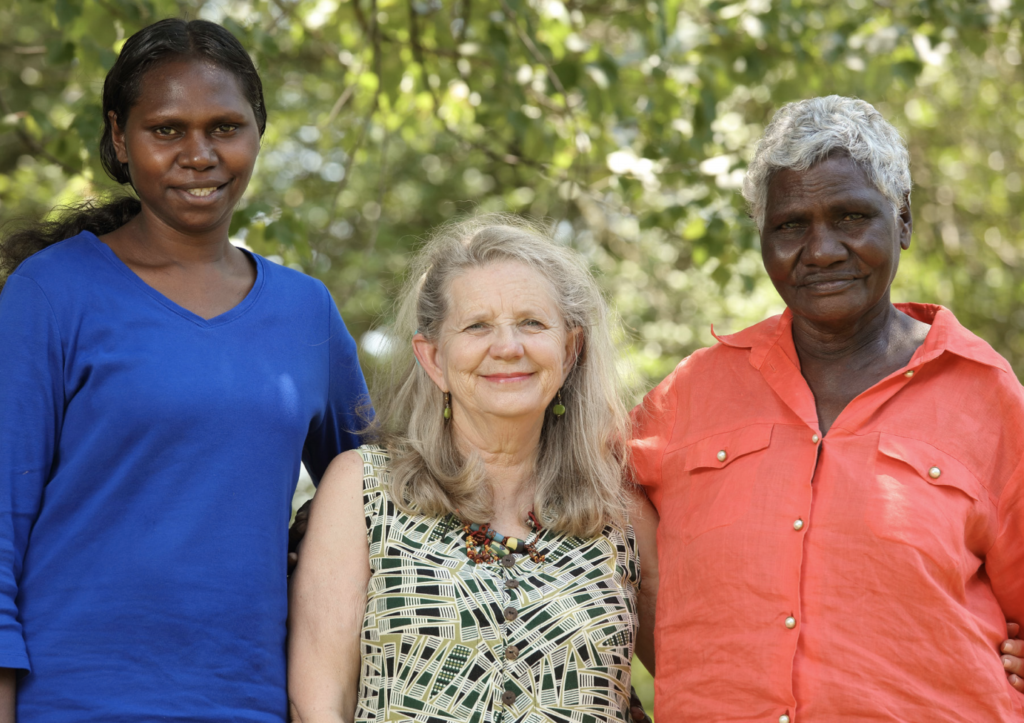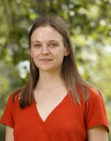In the Spring of 2019, the Kluge-Ruhe Aboriginal Art Museum at the University of Virginia received a donation of a hundred or so fiber objects from Louise Hamby, an anthropologist who has spent many decades researching fiber work in Arnhem Land, located in the northeast corner of Australia’s Northern Territory. From this donation, an exhibition was put together by six undergraduate students, with significant guidance from both Hamby and visiting fiber artists Lucy Malirrimurruwuy Waṉapuyŋu and Anna Ramatha Malibirr. The exhibition, called With Her Hands: Fiber Art from Gapuwiyak, honors the artistic excellence of fiber work, as well as the ingenuity and accomplishment of women makers.
In the EuroAmerican art world, fiber works have traditionally been placed into the categories of “craft” and “women’s work.” Aboriginal bark paintings produced by men, for example, have been given precedence as both artistic masterworks and as indexes of cultural knowledge, and it is only recently that “craft” forms such as those in With Her Hands have gained recognition for their artistry. Yolŋu people, however, do not subscribe to the same western binaries that separate art and craft. Instead, art objects and practices are part of everyday life and constitute one of the central sites of cultural knowledge in the form of ceremony, daily use, and kinship relationships.
Missionaries arrived in Arnhem Land in the early twentieth century, bringing with them the tastes and needs of the European market. They encouraged Yolŋu fiber artists to alter their techniques and materials—eliminating ochre paint, flattening mats, introducing coiling—in order to make their art more desirable for consumers, and also to bring women makers more in line with western Christian standards of production. Arnhem Land fiber artists integrated these new styles into their practice, in order to take part in larger markets and to produce new and innovative forms.
The fiber art that is produced in Gapuwiyak today preserves many of the practices and meanings that existed before the arrival of missionaries; traditions that will continue to be passed down to future generations of artists. Along with these traditional foundations, women also bring new elements—materials, techniques and forms—that draw on the techniques they have learned for market demands. This fusion has resulted in unique functional bathi (container forms) such as string bags and twined and coiled baskets, as well as striking ornamental forms such as the crocodile and dolly-dolly figures.
During a three-week visit to the Kluge-Ruhe, Lucy, Anna and Louise taught everyone first-hand about the production and meaning of the works in the show, some of which were made by Lucy many years ago. Their knowledge and skill has been an invaluable resource to the curators as they studied fiber art from Gapuwiyak and brought the exhibition to life, and also to the creation of this video. Something especially important that I came to understand during this time is how much there is to learn about each individual artwork—each piece tells the story of a person, a family, a community, a land, and a culture.
Additional Reading
Hamby, Louise. 2010. Containers of Power: Women with Clever Hands. Richmond, VIC: Utber and Patullo.
Hamby, Louise. 2001. Art on a String: Threaded Objects from the Central Desert and Arnhem Land. Sydney: Object-Australian Centre for Craft and Design.
Isaacs, Jennifer. 1980. Australian Dreaming: 40,000 Years of Aboriginal History. Lansdowne Press.
Mason, Otis Tufton. 1976. Aboriginal American Indian Basketry: Studies in Textile Art Without Machinery. Brand: Peregrine Smith, Inc.
Morphy, Howard. 1991. Ancestral Connections: Art and an Aboriginal System of Knowledge. Chicago: University of Chicago Press.
Additional Credits

Louise Hamby (center) with artists Anna Ramatha Malibirr (left) and Lucy Malirrimurruwuy Wanapuŋu (right). Photo: Tom Cogill.
I am so grateful to Louise Hamby for donating this incredible collection of fiber art to the Kluge-Ruhe Museum, and to, Anna Ramatha Malibirr, Lucy Malirrimurruwuy Waṉapuyŋu, and Silke Roth (former manager of the Gapuwiyak Culture and Arts Centre), for their willingness to answer my questions. It has been a gift to spend time with, learn about, and work with these artists.
Get Involved
Learn about forthcoming podcast episodes, newly published projects, research opportunities, public events, and more.
Potential Students


